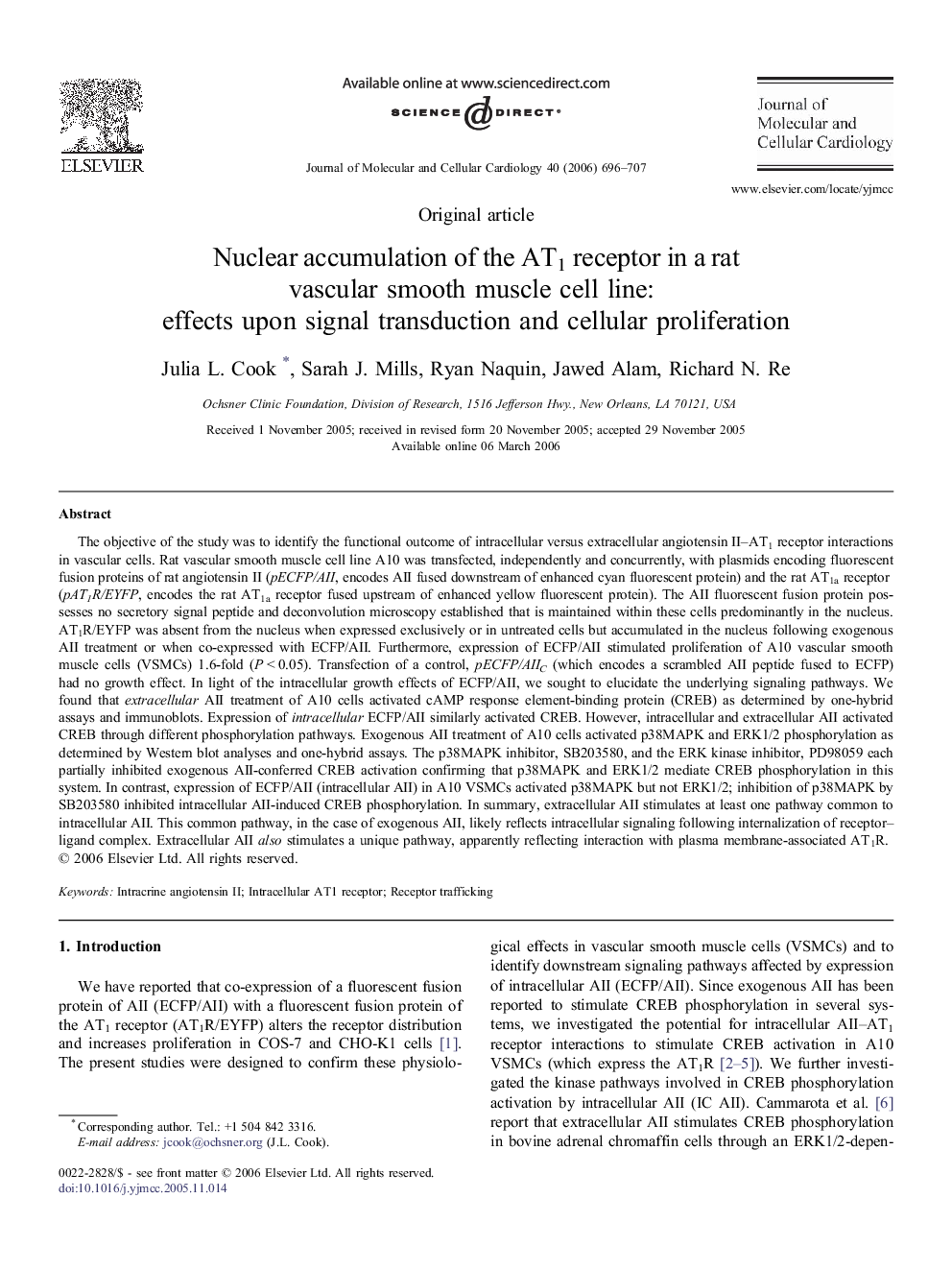| کد مقاله | کد نشریه | سال انتشار | مقاله انگلیسی | نسخه تمام متن |
|---|---|---|---|---|
| 2192483 | 1097893 | 2006 | 12 صفحه PDF | دانلود رایگان |

The objective of the study was to identify the functional outcome of intracellular versus extracellular angiotensin II–AT1 receptor interactions in vascular cells. Rat vascular smooth muscle cell line A10 was transfected, independently and concurrently, with plasmids encoding fluorescent fusion proteins of rat angiotensin II (pECFP/AII, encodes AII fused downstream of enhanced cyan fluorescent protein) and the rat AT1a receptor (pAT1R/EYFP, encodes the rat AT1a receptor fused upstream of enhanced yellow fluorescent protein). The AII fluorescent fusion protein possesses no secretory signal peptide and deconvolution microscopy established that is maintained within these cells predominantly in the nucleus. AT1R/EYFP was absent from the nucleus when expressed exclusively or in untreated cells but accumulated in the nucleus following exogenous AII treatment or when co-expressed with ECFP/AII. Furthermore, expression of ECFP/AII stimulated proliferation of A10 vascular smooth muscle cells (VSMCs) 1.6-fold (P < 0.05). Transfection of a control, pECFP/AIIC (which encodes a scrambled AII peptide fused to ECFP) had no growth effect. In light of the intracellular growth effects of ECFP/AII, we sought to elucidate the underlying signaling pathways. We found that extracellular AII treatment of A10 cells activated cAMP response element-binding protein (CREB) as determined by one-hybrid assays and immunoblots. Expression of intracellular ECFP/AII similarly activated CREB. However, intracellular and extracellular AII activated CREB through different phosphorylation pathways. Exogenous AII treatment of A10 cells activated p38MAPK and ERK1/2 phosphorylation as determined by Western blot analyses and one-hybrid assays. The p38MAPK inhibitor, SB203580, and the ERK kinase inhibitor, PD98059 each partially inhibited exogenous AII-conferred CREB activation confirming that p38MAPK and ERK1/2 mediate CREB phosphorylation in this system. In contrast, expression of ECFP/AII (intracellular AII) in A10 VSMCs activated p38MAPK but not ERK1/2; inhibition of p38MAPK by SB203580 inhibited intracellular AII-induced CREB phosphorylation. In summary, extracellular AII stimulates at least one pathway common to intracellular AII. This common pathway, in the case of exogenous AII, likely reflects intracellular signaling following internalization of receptor–ligand complex. Extracellular AII also stimulates a unique pathway, apparently reflecting interaction with plasma membrane-associated AT1R.
Journal: Journal of Molecular and Cellular Cardiology - Volume 40, Issue 5, May 2006, Pages 696–707